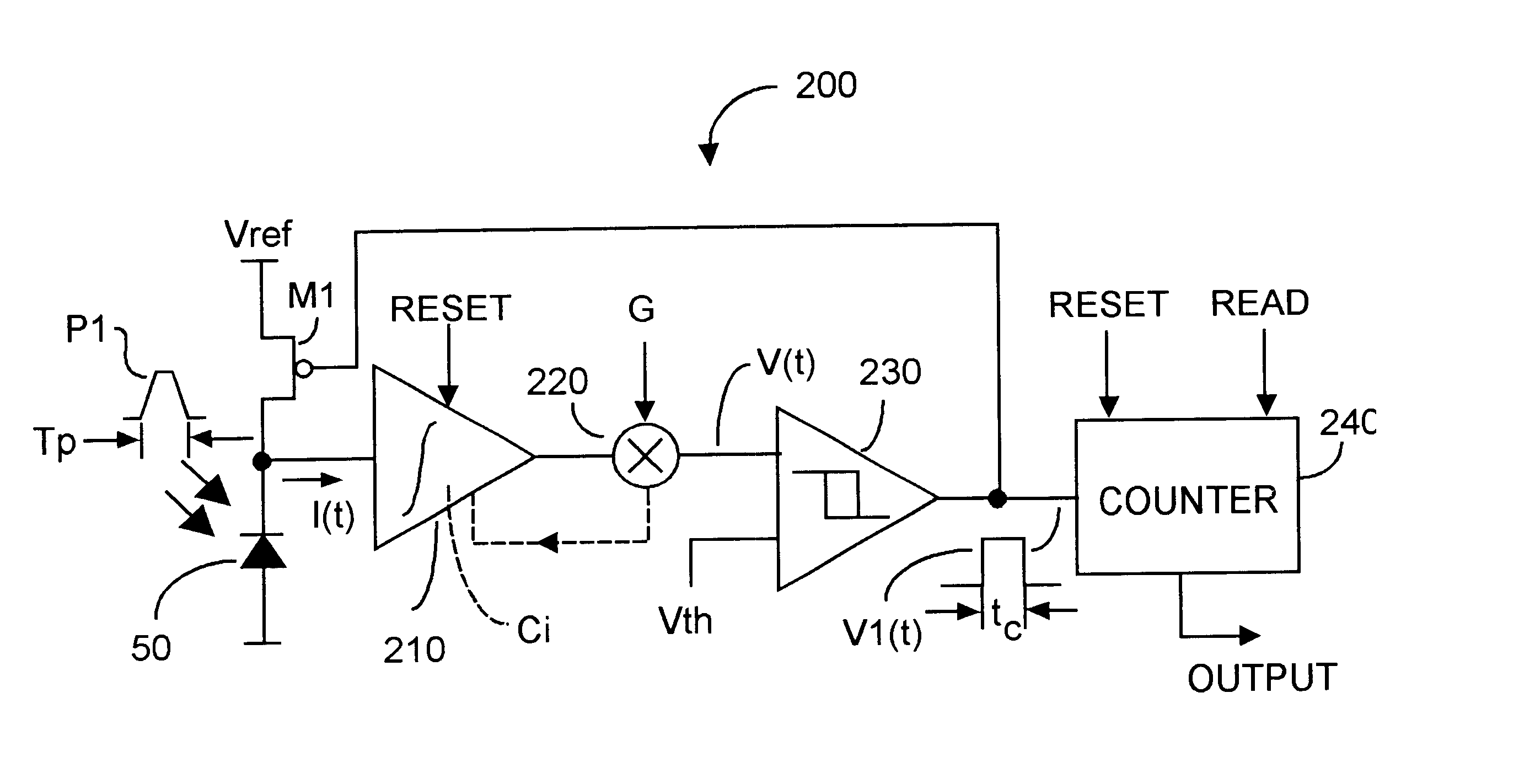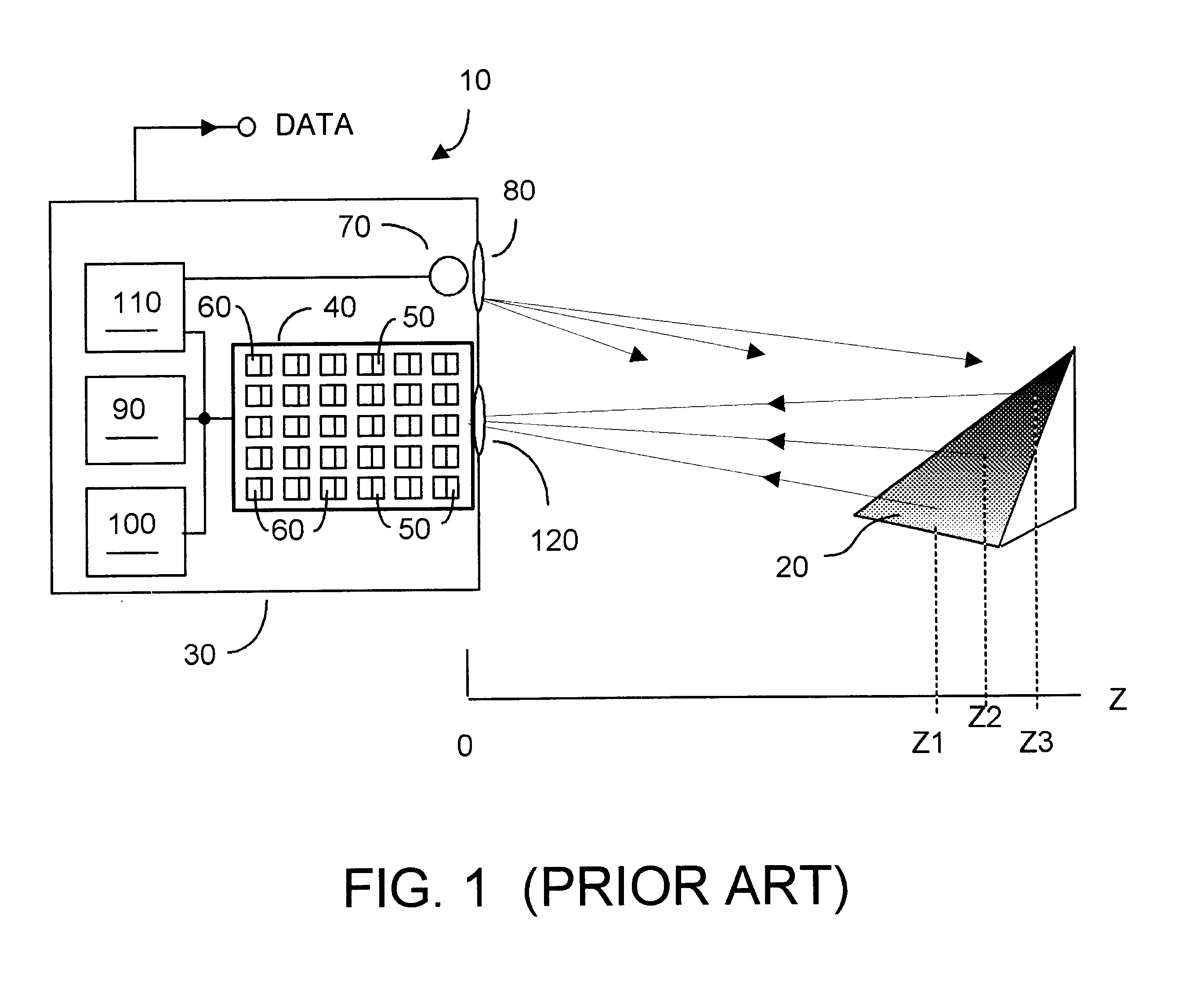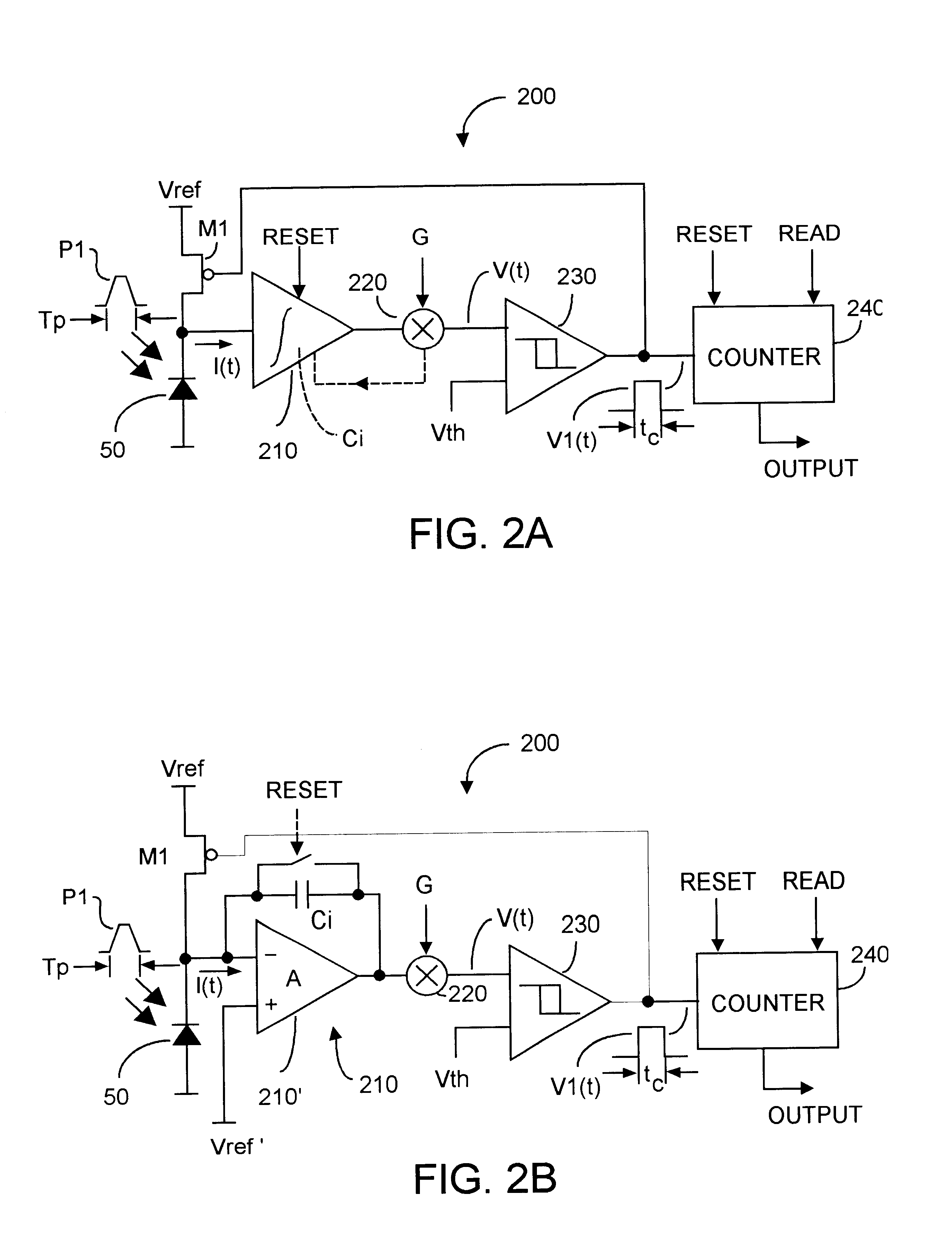Method and system to enhance dynamic range conversion useable with CMOS three-dimensional imaging
- Summary
- Abstract
- Description
- Claims
- Application Information
AI Technical Summary
Benefits of technology
Problems solved by technology
Method used
Image
Examples
Embodiment Construction
The present invention may be used with a variety of imaging sensing systems, including systems such as that described in U.S. Pat. No. 6,323,942 entitled "CMOS-Compatible Three-Dimensional Image Sensor IC" (2001), assigned to assignee herein. Other systems with which the present invention may be practiced are disclosed in U.S. patent applications Ser. No. 09 / 876,373 entitled "CMOS-Compatible Three-Dimensional Image Sensing Using Reduced Peak Energy", filed Jun. 6, 2001, and Ser. No. 10 / 020,393 entitled "Methods for CMOS-Compatible Three-dimensional Image Sensing Using Quantum Efficiency Modulation", filed Dec. 11, 2001, each application assigned to the assignee herein.
FIG. 2A depicts a generic circuit 200 coupled to a pixel detector or photodiode 50, for example a pixel detector in an array of pixel detectors such as array 40 in FIG. 1. As such, circuit 200 can represent individual circuits 60, shown in FIG. 1. Indeed, circuit 200 may be used with the system of FIG. 1 to improve sys...
PUM
 Login to View More
Login to View More Abstract
Description
Claims
Application Information
 Login to View More
Login to View More - R&D
- Intellectual Property
- Life Sciences
- Materials
- Tech Scout
- Unparalleled Data Quality
- Higher Quality Content
- 60% Fewer Hallucinations
Browse by: Latest US Patents, China's latest patents, Technical Efficacy Thesaurus, Application Domain, Technology Topic, Popular Technical Reports.
© 2025 PatSnap. All rights reserved.Legal|Privacy policy|Modern Slavery Act Transparency Statement|Sitemap|About US| Contact US: help@patsnap.com



